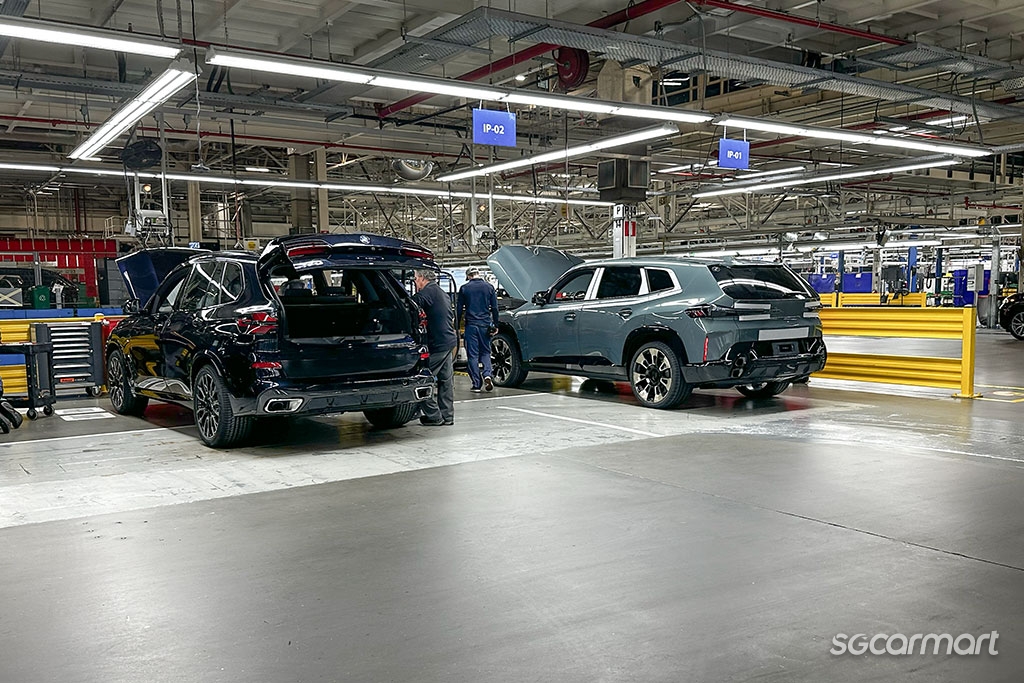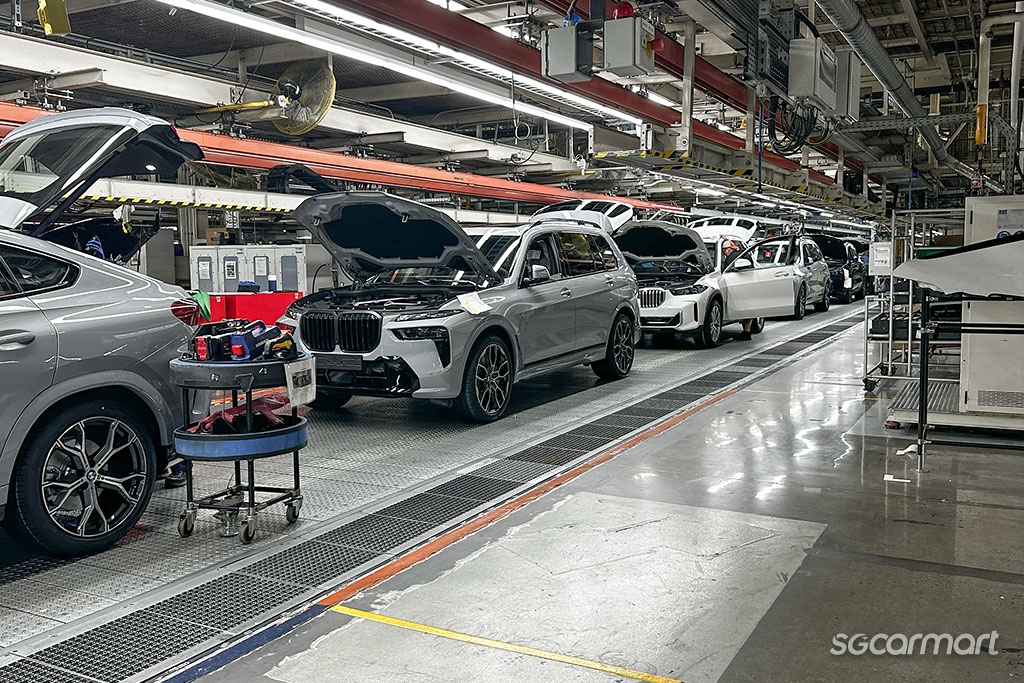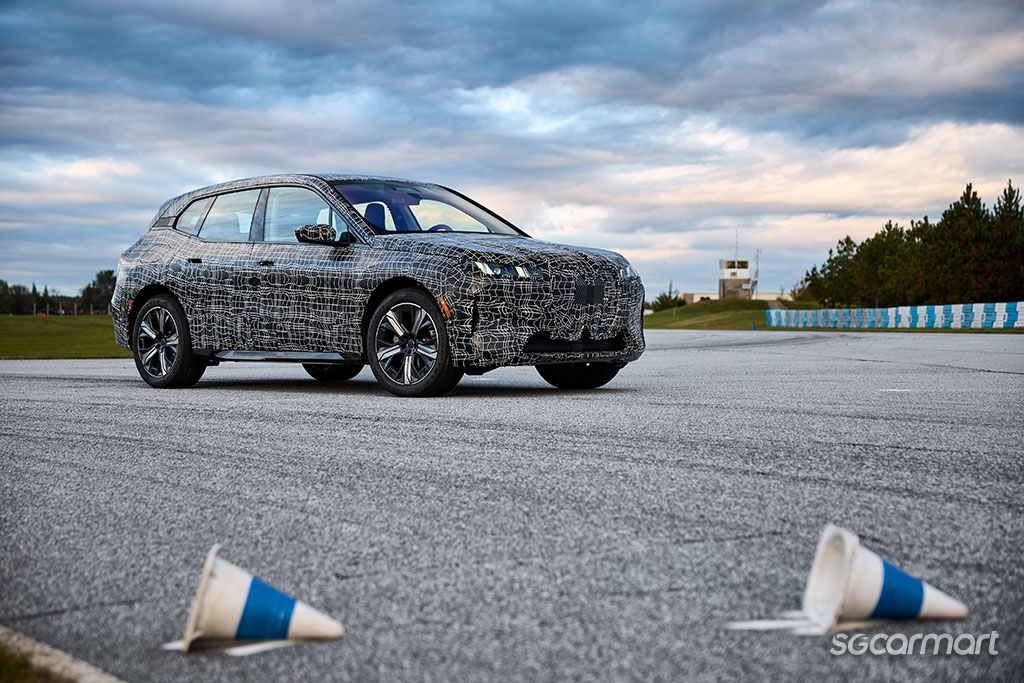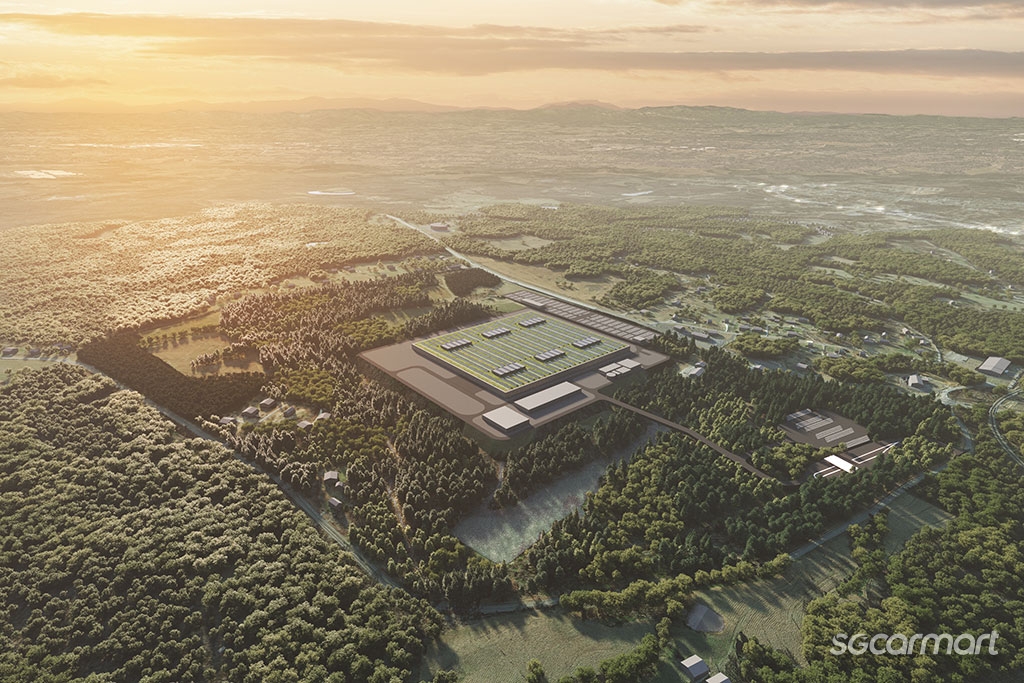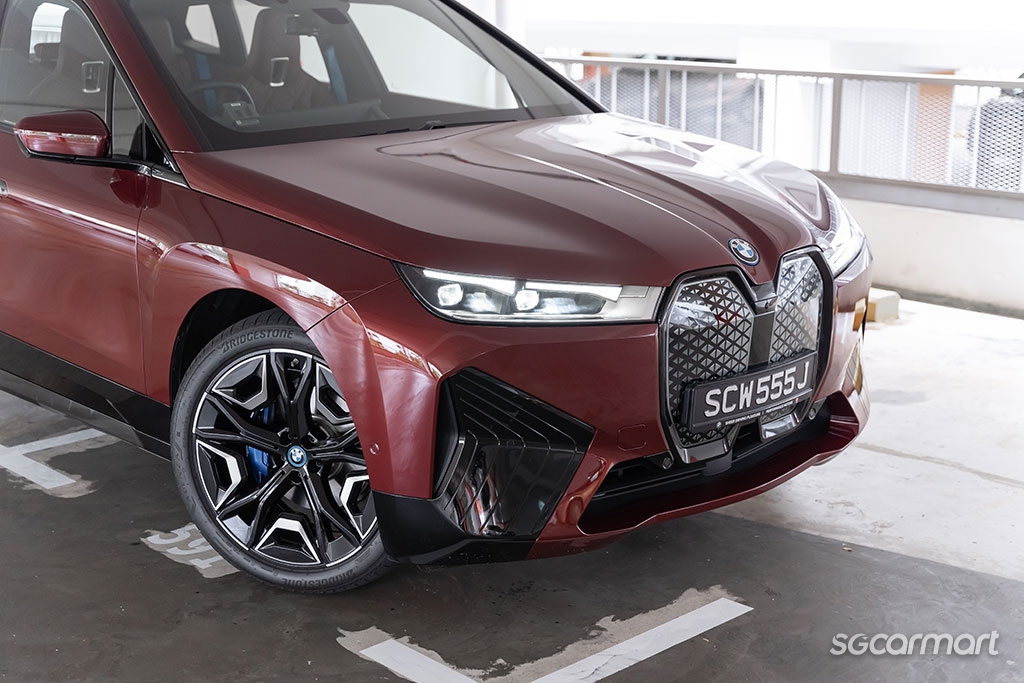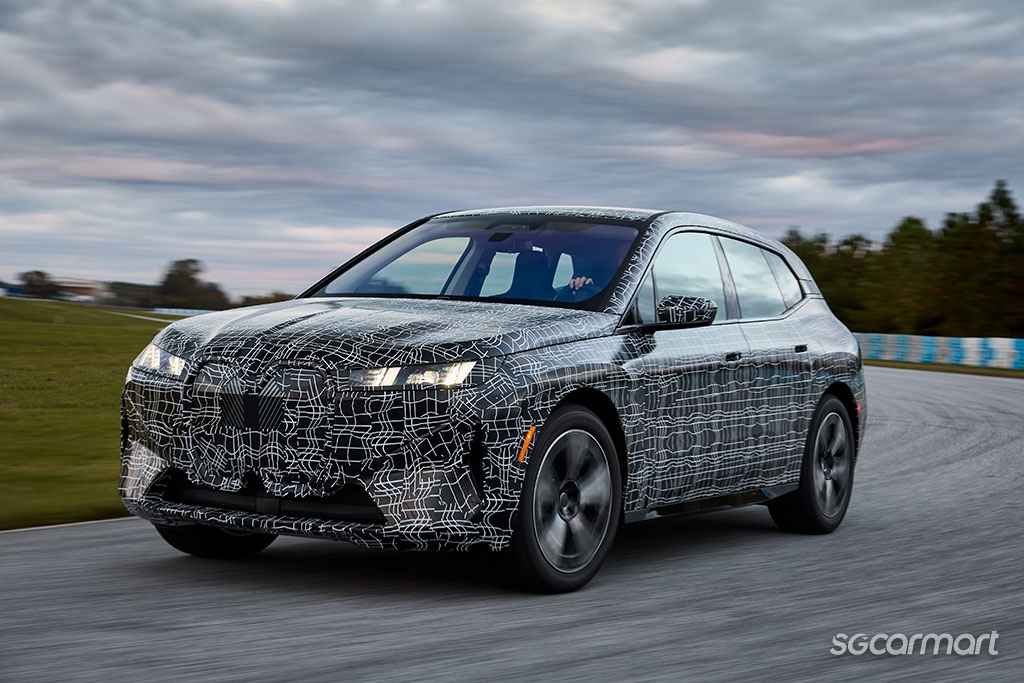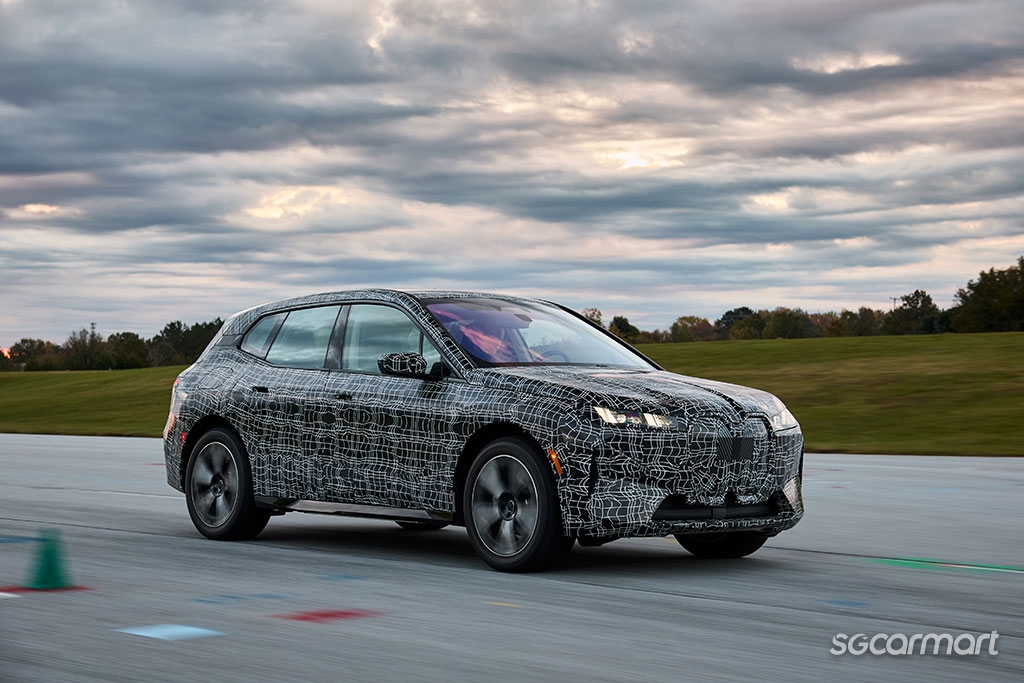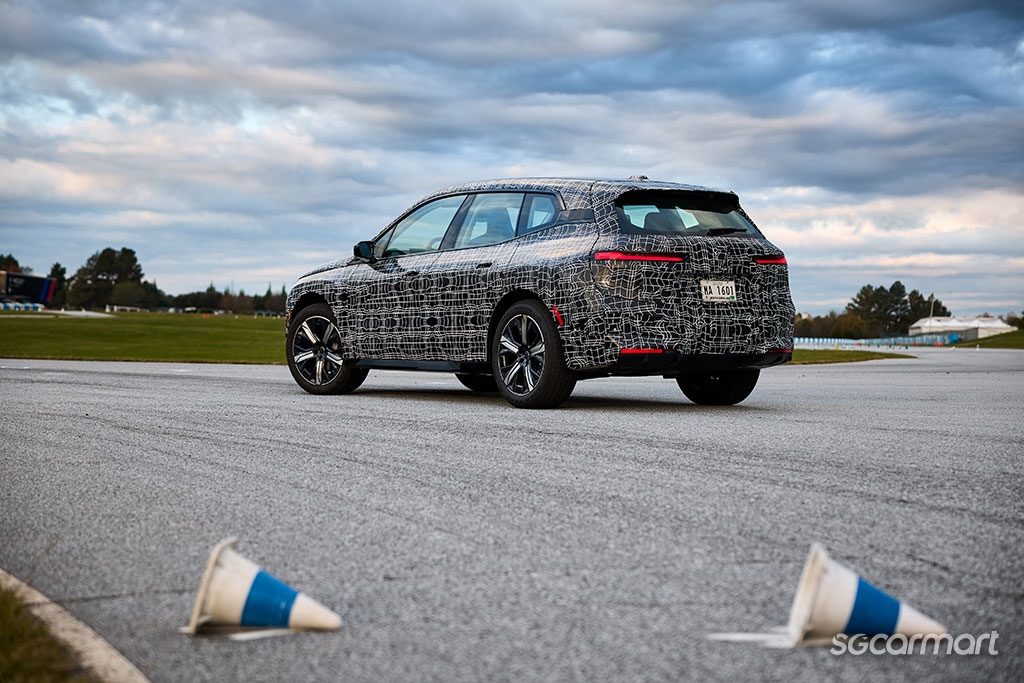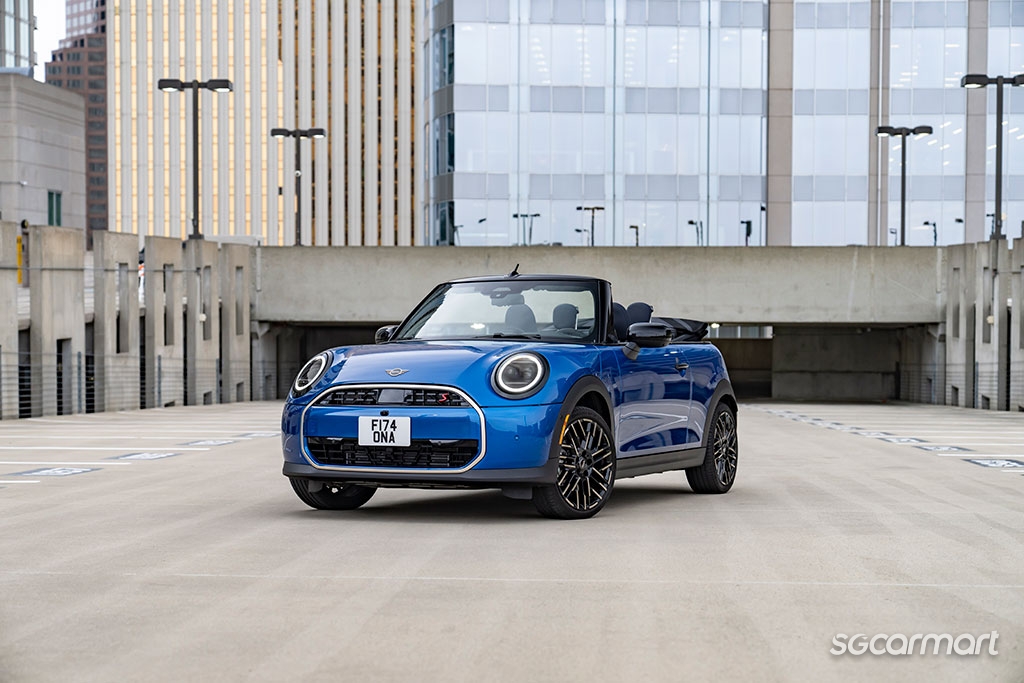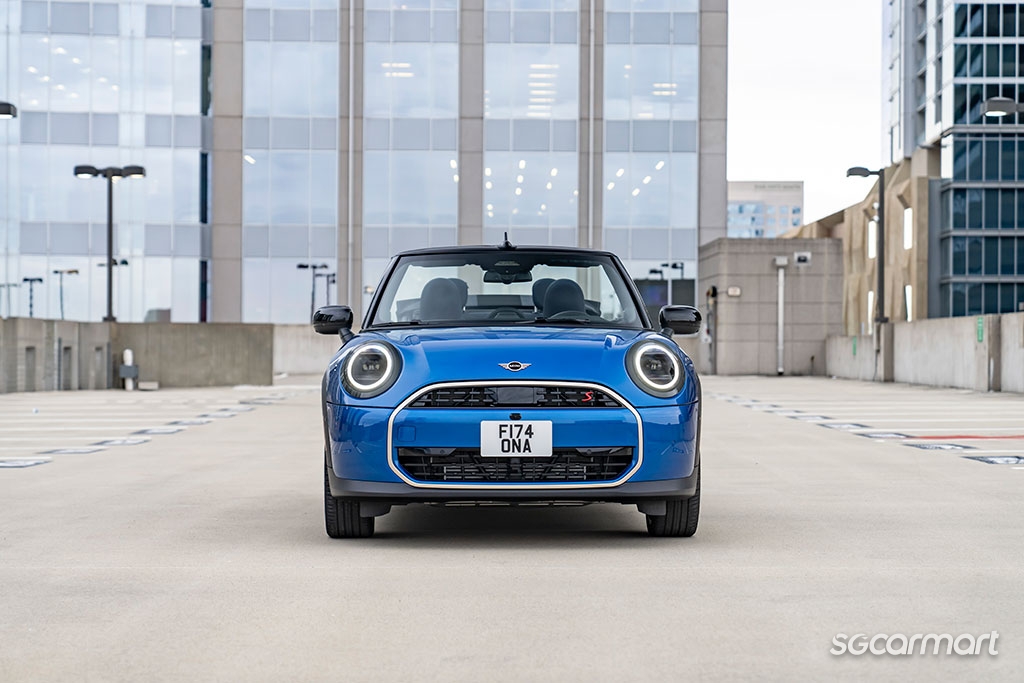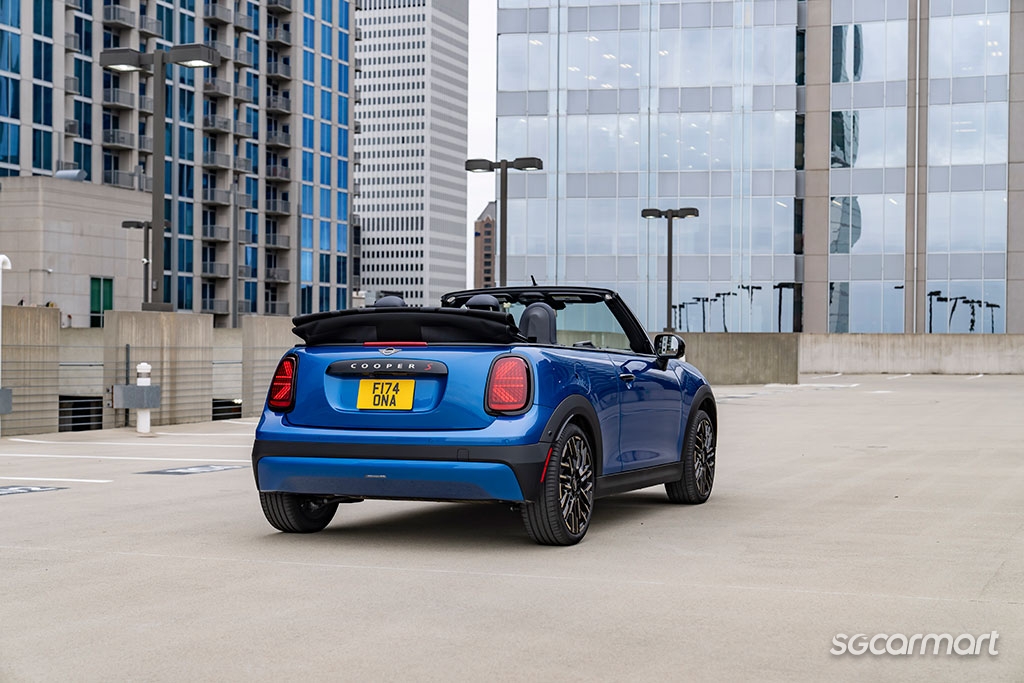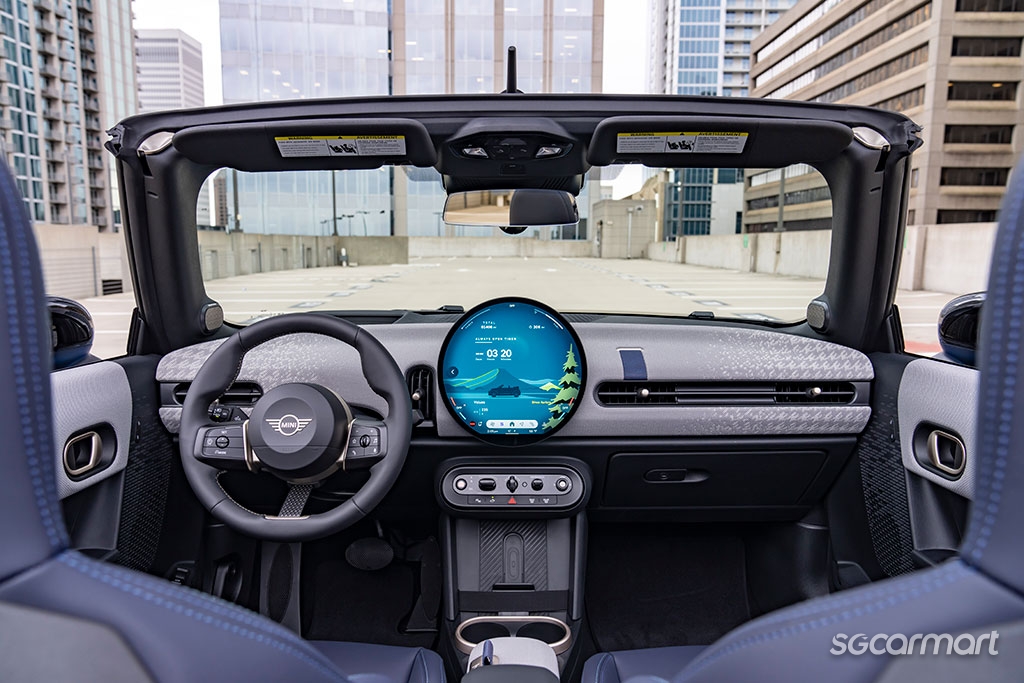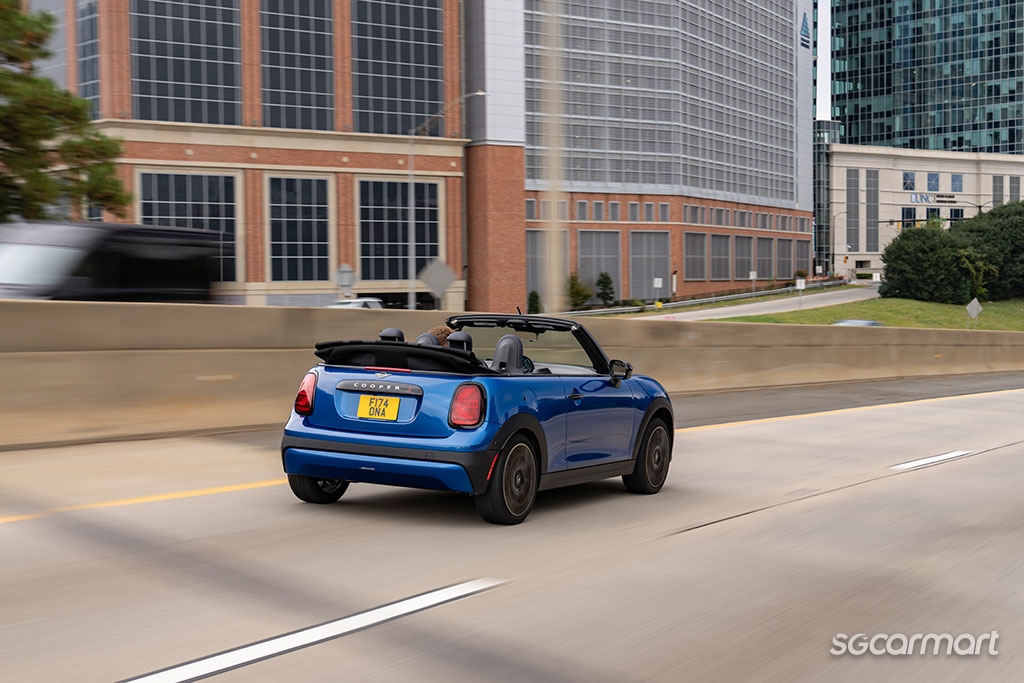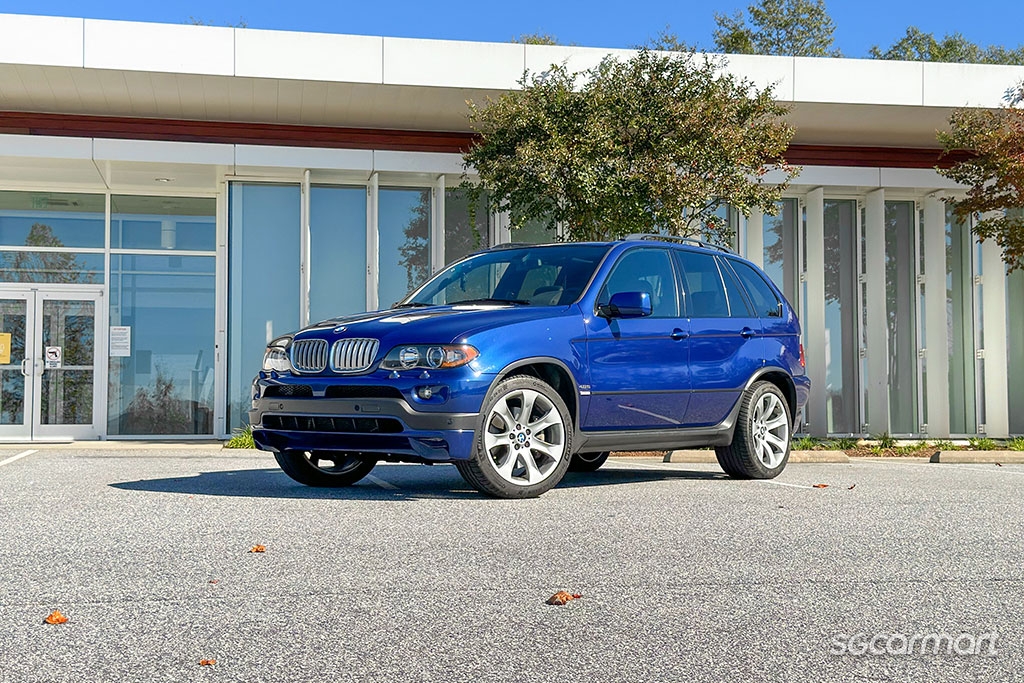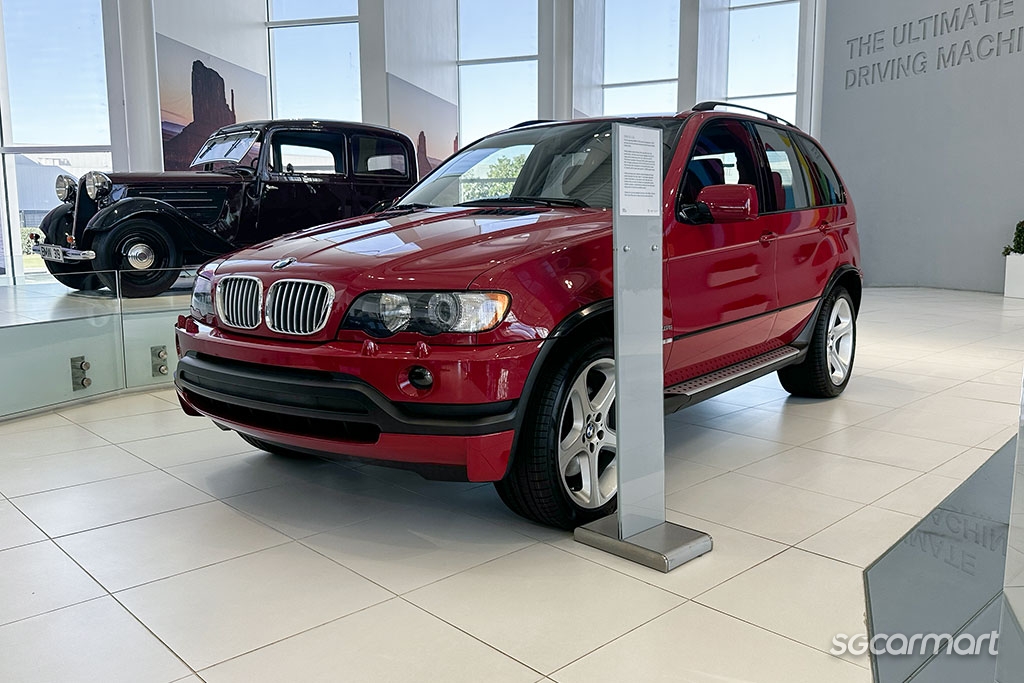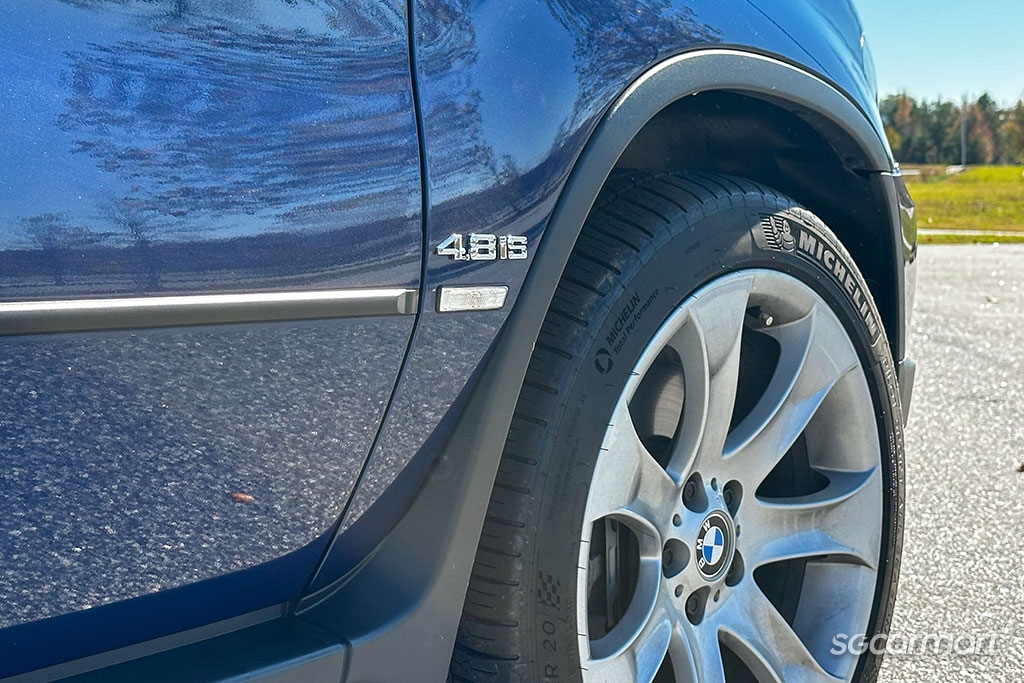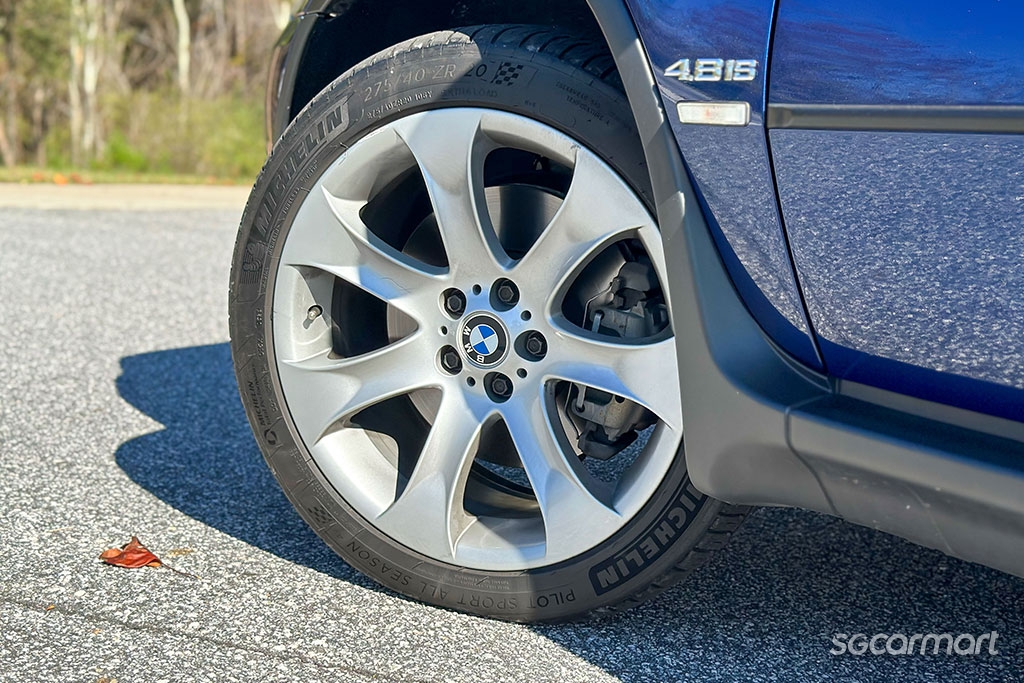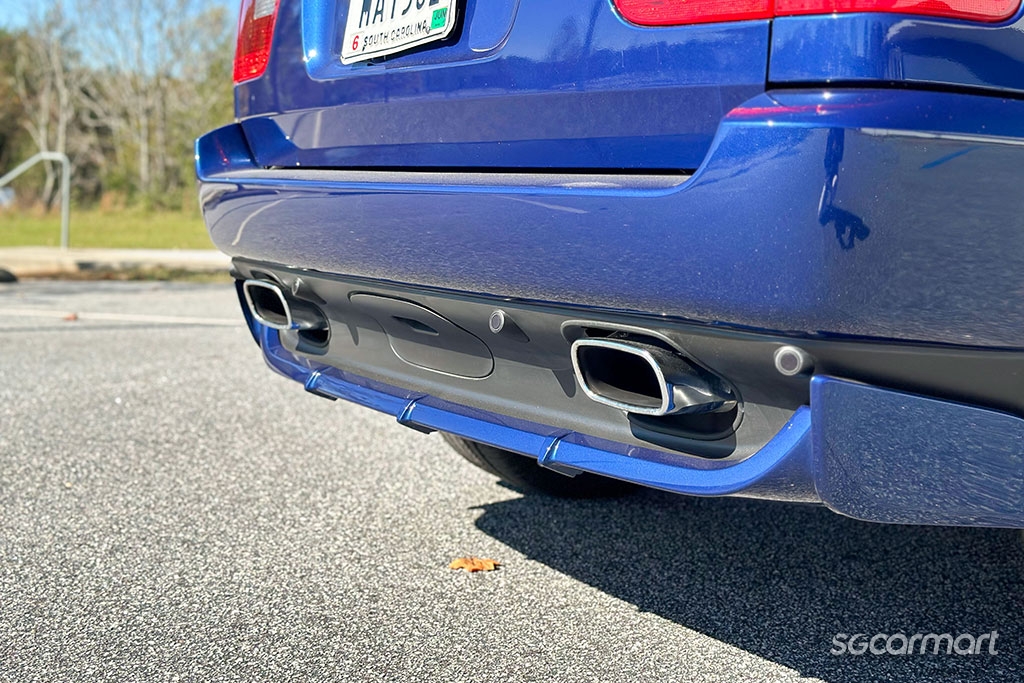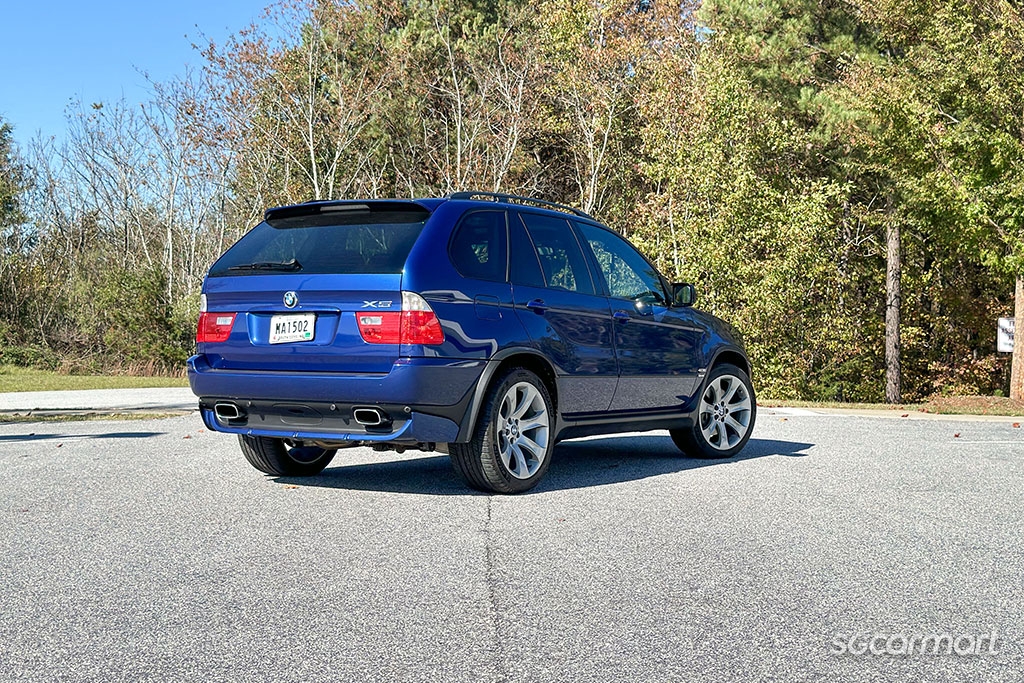BMW Test Fest Spartanburg: Through space and time
12 Dec 2024|673 views
The cloudless blue skies - and the plain fact that cars here drive on the right side of the road - may momentarily fool a jetlagged Singaporean brain into thinking that they were in suburban Munich. The truth unravels itself quickly, however, in the overhead power lines and road signs, on the slightly battered tarmac, and in the not-uncommon pickup trucks that trundle past: We're across the Atlantic and in the heart of South Carolina, more than 7,000km away from Bavaria.
Munich may be what most of us immediately associate BMW with, but the brand's reach has long been far more global. In fact, said heart of South Carolina - Plant Spartanburg - is dubbed 'Home of BMW X', with production of the X3, X4, X5, X6, X7 and the bonkers XM all carried out here. (Consider the larger BMW Group, which has counted itself as the proud steward of MINI and Rolls-Royce since varying points of the turn of the 21st century, and the brand's global reach carries even more weight.)
Plant Spartanburg is now widely known as the home of BMW X, and is largely responsible for production of its mid- to full-sized SUVs, including the X3, X5, and XM
Our first experience of the BMW Test Fest - a driving extravaganza effectively designed to give participants small but diverse tasters of the Group's products - saw Marina Bay Sands and Singapore's skyline as its backdrop. It also comprised cars presently in production and on sale.
But the Test Fest at Spartanburg presents something different. Against last year's seven-car shootout, the trio we try this time round may be smaller in size, but takes us through an even more varied spread - including a car that hasn't even been revealed in full.
Facelifted BMW iX prototype: Updated electric eye on the future (in camouflage for now)
Christened as the 'technology flagship' of the brand when it was first unveiled in 2021, it's not wrong to think of the BMW iX as having two core identities.
The first letter of its name (intentionally left in lowercase) references the fact that it has proudly waved the flag for BMW's new era of electrification since its debut. At its core, however, this is also still a sumptuous SUV (or SAV) - just as any other BMW X car is.
As such, despite being produced in Plant Dingolfing and not here in Spartanburg, one could make a case that it still holds a spiritual link to the facility. In fact, it's possible that the ties between the iX and the U.S.A could grow even warmer by the time the second-generation swings around; right down the road from Plant Spartanburg will soon lie the all-new Plant Woodruff, which will produce high-voltage batteries for fully electric BMW X models.
The reason why the particular iX in these photos is in camouflage (and even then, might look slightly different to the iX you've grown familiar with over the past three years) is because the model will soon undergo a mid-life refresh.
Based purely on what meets the eye, the changes might not seem significant.
The iX looks like it will retain most of its styling even in refreshed form, with the exception of new head lights in the style of what we've seen from the facelifted i4 and latest 1 Series (housing vertical rather than horizontal signatures), and what seems to be a new grille design with diagonal strokes (again, like the 1 Series and also new X3).
The facelift will bring with it light styling tweaks to keep the iX apace with its siblings - most notably (for now), with the horizontal head light signatures making way for vertical ones
Things are quite different on a mechanical level. Slated for the new car are relatively significant hikes in efficiency and power - meaning BMW's tech flagship promises extra punch when you give the accelerator a good shove, yet will also take a driver further on a single charge.
On the road, the experience behind the wheel of the updated iX is similar to what was previously on offer - although it's also worth noting that the progress made with the latest iX is perhaps best derived from a longer period (and not a brief 15-minute jaunt). Carefully putting an electric car's range to test in such a short time is a fool's errand, and given the fact that the iX had always offered rapid and silent propulsion, the jump in power (we got to drive what will directly succeed the iX xDrive50) is not immediately perceptible.
That’s not to be taken as a slight against the updated iX, though.
As mentioned, in its original iteration, the car already felt lighter than its actual mass would suggest thanks to the instant wave of torque from its two electric motors. The same holds now - it never wants for power, and takes off with supreme ease; the dramatic silence of its rapid acceleration made all the starker against the combustion-powered cars struggling to keep up as the lights turn green. Also excellent still is the iX's overall sense of refinement and interior luxury, with the latter benefitting from more supportive front seats (with the M Sport package - more on that in a bit).
What is immediately apparent, however, is the updated iX's widened breadth of capabilities.
On one end, a new 'Activate maximum range' function in Efficiency mode promises to eke out more from the car's battery - and the effect is indeed rather pronounced once it's selected. At once, the air-conditioning is drastically reduced, and after a few seconds of re-loading, one notes the stated remaining range figure jumping by a fair bit. On the other end, the incoming addition of the optional M Sport package to the iX for the first time means drivers should have a wider range of play with the car's driving dynamics.
In essence, the updated iX doesn't seem keen on a drastic overhaul of what its predecessor had achieved - and that's not a bad thing. At its core, it still exudes the sort of luxurious and tech-heavy character, now made more compelling as a more powerful, and more efficient luxe-barge.
All-new, 4th-generation MINI Cooper Convertible: Big dose of sunshine in the present
Just the day before, the light drizzle and looming over of dark clouds had threatened to thwart the full potential of our enjoyment of the second car. The weather today, however, has thankfully decided to cooperate: As mentioned, a cloudless sky so blue it almost pierces the eyes.
And lots of sunshine of course.
Here in South Carolina, Plant Spartanburg holds a mirror up to the all-new, fourth-generation MINI Cooper Convertible. Both can boast of mixed heritage: The former, German and American; and the latter, German and English. In fact, the Cooper Convertible's prouder embrace of its English heritage (the Union Jack has spread to its fabric roof) is not for show - production of the car has shifted back to Oxford for this rodeo.
The fourth-generation Cooper Convertible follows the cleaner styling of its already-announced siblings - but retains those oval shapes at the rear (as opposed to the triangular ones we've seen thus far)
Today’s weather aside, sunny too is the demeanour of the Cooper Convertible. Its cheery face may closely resemble its predecessor's, but has likewise gotten the same treatment of siblings like the all-new Cooper E and Cooper C: Cleaner and thinner lines, and no more chrome.
Climbing aboard continues to surface bright delight.
The Cooper Convertible's all new interior is a visual treat, especially when held together by its new party piece: A rounded OLED screen that brings MINI's longstanding circular obsession to fascinating new heights. Powered by MINI OS 9, its seven distinct Experience Modes are no longer foreign - but what the Cooper Convertible does uniquely offer is a special feature that gamifies the drop-top experience. Making a return is the model's iconic 'Always Open' timer, which keeps track of all the time you've had the roof down. Necessary? Not exactly. But fun? Absolutely.
With three powertrain variants on offer for this fourth-generation car, the one we get to drive is the Cooper S Convertible, whose 2.0-litre turbocharged engine produces 201bhp and 310Nm of torque.
In isolation, the power is already plentiful enough to help this new Convertible re-clinch the pocket rocket status of its predecessors; the car scampering off with measured glee from a standstill. Drop the roof (in just 18 seconds and at up to 30km/h) and the intensity of the experience is taken a notch higher still. (Note: Don't bother styling your hair on days you know you’ll have the roof down.)
Again, however, it is down a twisty path where the Cooper Convertible really shines.
Despite common perceptions that drop-tops are a little clumsier, the car feels extremely tight and controlled, responding to one's inputs with commendable alacrity. We didn't get to drive the standard Cooper Convertible - but one gets the sense that the additional suspension bracing in this Cooper S Convertible (provided by MINI to keep it faithful to its performance-outlook) is at play here.
Given that MINI's modern lineup skews more heavily towards practicality (the Aceman and Countryman are both five-door crossovers), the Cooper Convertible's persisting presence in the family is welcome. It may have been the last member among the current MINI family to be revealed, but its sunny proposition - sealed tightly in an irresistible, charming body - remains impossible to replicate among the rest.
E53 BMW X5 4.8is: Trailblazing, thrilling blast from the past
While our first two cars are arguably connected to Plant Spartanburg more tangentially, our third car arguably lies at the depths of its heart.
When it opened its doors in 1994, the facility had actually produced other BMWs including the 3 Series and Z3 - but 1999 saw the genesis of its modern identity as 'Home of BMW X' with a turn-of-the-era car: The first-generation BMW X5.
Till today, debates can still rage on about how exactly an SAV differs from an SUV, but no doubts can be cast on the fact that the X5 stood at the start of the modern luxury SUV-craze. While the term 'icon' is thrown around quite casually, this E53 X5 arguably deserves it for the automotive revolution it helped to spearhead. To come up close with one should thus fascinate any motoring nerd quite thoroughly.
Face to face with a pristine example in 2024, what is most immediately striking is how analogue the entire user experience is. With its new interior, the Cooper Convertible does a charming simulation of the switching on of the ignition with the permanently-affixed 'key fob' - but nothing beats a proper, physical key: Hearing the rattle of metal on metal, and then a sweet, inimitable rumble as the car is awoken…
…because this isn't even just any old E53 X5.
Introduced as part of the model's mid-life facelift, the X5 4.8is marked the most powerful variant of the first-generation car to have rolled off Plant Spartanburg's assembly lines. While the M Performance label didn't exist back in the early 2000s, BMW proffers that you could look at this as the spiritual precursor to that: Boasting more power and light mechanical upgrades, but not to the point of a track-focus.
The 4.8is came with larger (20-inch) wheels, more powerful brakes and a sports suspension, apart from being powered by a naturally aspirated 4.8-litre V8
And more power the X5 4.8is certainly had. Its name already hints at what lies underneath its hood: A naturally aspirated 4.8-litre V8 putting out 355bhp, and capable of sending it from 0 to 100km/h in about six seconds.
As the automotive landscape has changed, the X5 4.8is doesn't hold the same sort of shocking presence typical of performance SUVs today. Its 20-inch tyres, for instance - noted for being massive at that time - are easily dwarfed by the 22-inch ones on today's standard X5, which itself boasts more power too from its inline-six engine thanks to turbocharging.
But proof that numbers and pizzazz are not the be-all and end-all of driving pleasure, the car continues to thrill in its own way.
Fitted with a sports suspension, the X5 4.8is handles remarkably, taking to sweeping bends with surprising precision and ease. Cars have grown over the years, but this original form - smaller than even a third generation X3 - is alluring for its size (or the absence of it). One gets the sense that the relative lack of heft aids its agility on the go. On the note of size, the first-gen X5, on retrospect, is even quite handsome with its more restrained styling. That kidney grille is probably half the size of those on many modern BMWs.
It's held together ultimately, of course, by that sweet V8. What it may lack in outright thunder, it gives back in unadulterated pleasure. Measured firepower aside, its other standout quality is how linear the power delivery is.
The first-generation X5 also came from a simpler time where sound augmentation wasn't such a big thing, and while its V8 isn't the most riotous unit, its raw, bassy exhaust note is still sweet music to the ears.
25 years on, the fact that the current X5 still stands out as one of the more capable SUVs on the market is owed to something like this original X5 4.8is. The automotive landscape continues to evolve, and Plant Spartanburg, too, has been joined by many other BMW Group Plants around the world. But driving pleasure is not a finite commodity - and even as certain cars and certain sites will always be important to BMW, the constant embrace of change is welcome too.
Here are a few other stories that may interest you!
BMW Test Fest: 11 cars, five hours, one incredible afternoon
The cloudless blue skies - and the plain fact that cars here drive on the right side of the road - may momentarily fool a jetlagged Singaporean brain into thinking that they were in suburban Munich. The truth unravels itself quickly, however, in the overhead power lines and road signs, on the slightly battered tarmac, and in the not-uncommon pickup trucks that trundle past: We're across the Atlantic and in the heart of South Carolina, more than 7,000km away from Bavaria.
Munich may be what most of us immediately associate BMW with, but the brand's reach has long been far more global. In fact, said heart of South Carolina - Plant Spartanburg - is dubbed 'Home of BMW X', with production of the X3, X4, X5, X6, X7 and the bonkers XM all carried out here. (Consider the larger BMW Group, which has counted itself as the proud steward of MINI and Rolls-Royce since varying points of the turn of the 21st century, and the brand's global reach carries even more weight.)
Plant Spartanburg is now widely known as the home of BMW X, and is largely responsible for production of its mid- to full-sized SUVs, including the X3, X5, and XM
Our first experience of the BMW Test Fest - a driving extravaganza effectively designed to give participants small but diverse tasters of the Group's products - saw Marina Bay Sands and Singapore's skyline as its backdrop. It also comprised cars presently in production and on sale.
But the Test Fest at Spartanburg presents something different. Against last year's seven-car shootout, the trio we try this time round may be smaller in size, but takes us through an even more varied spread - including a car that hasn't even been revealed in full.
Facelifted BMW iX prototype: Updated electric eye on the future (in camouflage for now)
Christened as the 'technology flagship' of the brand when it was first unveiled in 2021, it's not wrong to think of the BMW iX as having two core identities.
The first letter of its name (intentionally left in lowercase) references the fact that it has proudly waved the flag for BMW's new era of electrification since its debut. At its core, however, this is also still a sumptuous SUV (or SAV) - just as any other BMW X car is.
As such, despite being produced in Plant Dingolfing and not here in Spartanburg, one could make a case that it still holds a spiritual link to the facility. In fact, it's possible that the ties between the iX and the U.S.A could grow even warmer by the time the second-generation swings around; right down the road from Plant Spartanburg will soon lie the all-new Plant Woodruff, which will produce high-voltage batteries for fully electric BMW X models.
The reason why the particular iX in these photos is in camouflage (and even then, might look slightly different to the iX you've grown familiar with over the past three years) is because the model will soon undergo a mid-life refresh.
Based purely on what meets the eye, the changes might not seem significant.
The iX looks like it will retain most of its styling even in refreshed form, with the exception of new head lights in the style of what we've seen from the facelifted i4 and latest 1 Series (housing vertical rather than horizontal signatures), and what seems to be a new grille design with diagonal strokes (again, like the 1 Series and also new X3).
The facelift will bring with it light styling tweaks to keep the iX apace with its siblings - most notably (for now), with the horizontal head light signatures making way for vertical ones
Things are quite different on a mechanical level. Slated for the new car are relatively significant hikes in efficiency and power - meaning BMW's tech flagship promises extra punch when you give the accelerator a good shove, yet will also take a driver further on a single charge.
On the road, the experience behind the wheel of the updated iX is similar to what was previously on offer - although it's also worth noting that the progress made with the latest iX is perhaps best derived from a longer period (and not a brief 15-minute jaunt). Carefully putting an electric car's range to test in such a short time is a fool's errand, and given the fact that the iX had always offered rapid and silent propulsion, the jump in power (we got to drive what will directly succeed the iX xDrive50) is not immediately perceptible.
That’s not to be taken as a slight against the updated iX, though.
As mentioned, in its original iteration, the car already felt lighter than its actual mass would suggest thanks to the instant wave of torque from its two electric motors. The same holds now - it never wants for power, and takes off with supreme ease; the dramatic silence of its rapid acceleration made all the starker against the combustion-powered cars struggling to keep up as the lights turn green. Also excellent still is the iX's overall sense of refinement and interior luxury, with the latter benefitting from more supportive front seats (with the M Sport package - more on that in a bit).
What is immediately apparent, however, is the updated iX's widened breadth of capabilities.
On one end, a new 'Activate maximum range' function in Efficiency mode promises to eke out more from the car's battery - and the effect is indeed rather pronounced once it's selected. At once, the air-conditioning is drastically reduced, and after a few seconds of re-loading, one notes the stated remaining range figure jumping by a fair bit. On the other end, the incoming addition of the optional M Sport package to the iX for the first time means drivers should have a wider range of play with the car's driving dynamics.
In essence, the updated iX doesn't seem keen on a drastic overhaul of what its predecessor had achieved - and that's not a bad thing. At its core, it still exudes the sort of luxurious and tech-heavy character, now made more compelling as a more powerful, and more efficient luxe-barge.
All-new, 4th-generation MINI Cooper Convertible: Big dose of sunshine in the present
Just the day before, the light drizzle and looming over of dark clouds had threatened to thwart the full potential of our enjoyment of the second car. The weather today, however, has thankfully decided to cooperate: As mentioned, a cloudless sky so blue it almost pierces the eyes.
And lots of sunshine of course.
Here in South Carolina, Plant Spartanburg holds a mirror up to the all-new, fourth-generation MINI Cooper Convertible. Both can boast of mixed heritage: The former, German and American; and the latter, German and English. In fact, the Cooper Convertible's prouder embrace of its English heritage (the Union Jack has spread to its fabric roof) is not for show - production of the car has shifted back to Oxford for this rodeo.
The fourth-generation Cooper Convertible follows the cleaner styling of its already-announced siblings - but retains those oval shapes at the rear (as opposed to the triangular ones we've seen thus far)
Today’s weather aside, sunny too is the demeanour of the Cooper Convertible. Its cheery face may closely resemble its predecessor's, but has likewise gotten the same treatment of siblings like the all-new Cooper E and Cooper C: Cleaner and thinner lines, and no more chrome.
Climbing aboard continues to surface bright delight.
The Cooper Convertible's all new interior is a visual treat, especially when held together by its new party piece: A rounded OLED screen that brings MINI's longstanding circular obsession to fascinating new heights. Powered by MINI OS 9, its seven distinct Experience Modes are no longer foreign - but what the Cooper Convertible does uniquely offer is a special feature that gamifies the drop-top experience. Making a return is the model's iconic 'Always Open' timer, which keeps track of all the time you've had the roof down. Necessary? Not exactly. But fun? Absolutely.
With three powertrain variants on offer for this fourth-generation car, the one we get to drive is the Cooper S Convertible, whose 2.0-litre turbocharged engine produces 201bhp and 310Nm of torque.
In isolation, the power is already plentiful enough to help this new Convertible re-clinch the pocket rocket status of its predecessors; the car scampering off with measured glee from a standstill. Drop the roof (in just 18 seconds and at up to 30km/h) and the intensity of the experience is taken a notch higher still. (Note: Don't bother styling your hair on days you know you’ll have the roof down.)
Again, however, it is down a twisty path where the Cooper Convertible really shines.
Despite common perceptions that drop-tops are a little clumsier, the car feels extremely tight and controlled, responding to one's inputs with commendable alacrity. We didn't get to drive the standard Cooper Convertible - but one gets the sense that the additional suspension bracing in this Cooper S Convertible (provided by MINI to keep it faithful to its performance-outlook) is at play here.
Given that MINI's modern lineup skews more heavily towards practicality (the Aceman and Countryman are both five-door crossovers), the Cooper Convertible's persisting presence in the family is welcome. It may have been the last member among the current MINI family to be revealed, but its sunny proposition - sealed tightly in an irresistible, charming body - remains impossible to replicate among the rest.
E53 BMW X5 4.8is: Trailblazing, thrilling blast from the past
While our first two cars are arguably connected to Plant Spartanburg more tangentially, our third car arguably lies at the depths of its heart.
When it opened its doors in 1994, the facility had actually produced other BMWs including the 3 Series and Z3 - but 1999 saw the genesis of its modern identity as 'Home of BMW X' with a turn-of-the-era car: The first-generation BMW X5.
Till today, debates can still rage on about how exactly an SAV differs from an SUV, but no doubts can be cast on the fact that the X5 stood at the start of the modern luxury SUV-craze. While the term 'icon' is thrown around quite casually, this E53 X5 arguably deserves it for the automotive revolution it helped to spearhead. To come up close with one should thus fascinate any motoring nerd quite thoroughly.
Face to face with a pristine example in 2024, what is most immediately striking is how analogue the entire user experience is. With its new interior, the Cooper Convertible does a charming simulation of the switching on of the ignition with the permanently-affixed 'key fob' - but nothing beats a proper, physical key: Hearing the rattle of metal on metal, and then a sweet, inimitable rumble as the car is awoken…
…because this isn't even just any old E53 X5.
Introduced as part of the model's mid-life facelift, the X5 4.8is marked the most powerful variant of the first-generation car to have rolled off Plant Spartanburg's assembly lines. While the M Performance label didn't exist back in the early 2000s, BMW proffers that you could look at this as the spiritual precursor to that: Boasting more power and light mechanical upgrades, but not to the point of a track-focus.
The 4.8is came with larger (20-inch) wheels, more powerful brakes and a sports suspension, apart from being powered by a naturally aspirated 4.8-litre V8
And more power the X5 4.8is certainly had. Its name already hints at what lies underneath its hood: A naturally aspirated 4.8-litre V8 putting out 355bhp, and capable of sending it from 0 to 100km/h in about six seconds.
As the automotive landscape has changed, the X5 4.8is doesn't hold the same sort of shocking presence typical of performance SUVs today. Its 20-inch tyres, for instance - noted for being massive at that time - are easily dwarfed by the 22-inch ones on today's standard X5, which itself boasts more power too from its inline-six engine thanks to turbocharging.
But proof that numbers and pizzazz are not the be-all and end-all of driving pleasure, the car continues to thrill in its own way.
Fitted with a sports suspension, the X5 4.8is handles remarkably, taking to sweeping bends with surprising precision and ease. Cars have grown over the years, but this original form - smaller than even a third generation X3 - is alluring for its size (or the absence of it). One gets the sense that the relative lack of heft aids its agility on the go. On the note of size, the first-gen X5, on retrospect, is even quite handsome with its more restrained styling. That kidney grille is probably half the size of those on many modern BMWs.
It's held together ultimately, of course, by that sweet V8. What it may lack in outright thunder, it gives back in unadulterated pleasure. Measured firepower aside, its other standout quality is how linear the power delivery is.
The first-generation X5 also came from a simpler time where sound augmentation wasn't such a big thing, and while its V8 isn't the most riotous unit, its raw, bassy exhaust note is still sweet music to the ears.
25 years on, the fact that the current X5 still stands out as one of the more capable SUVs on the market is owed to something like this original X5 4.8is. The automotive landscape continues to evolve, and Plant Spartanburg, too, has been joined by many other BMW Group Plants around the world. But driving pleasure is not a finite commodity - and even as certain cars and certain sites will always be important to BMW, the constant embrace of change is welcome too.
Here are a few other stories that may interest you!
BMW Test Fest: 11 cars, five hours, one incredible afternoon
Thank You For Your Subscription.




































